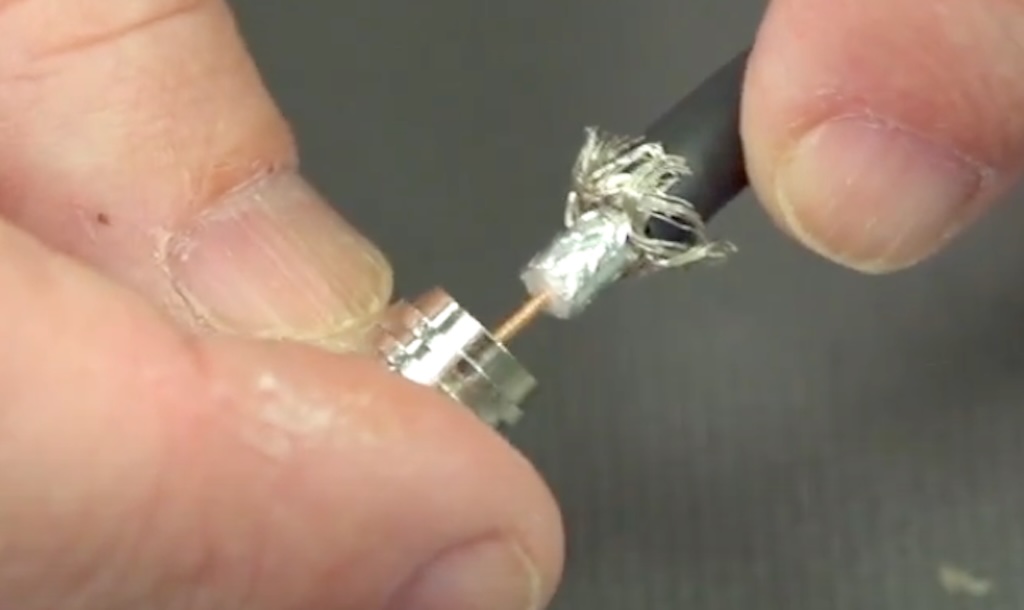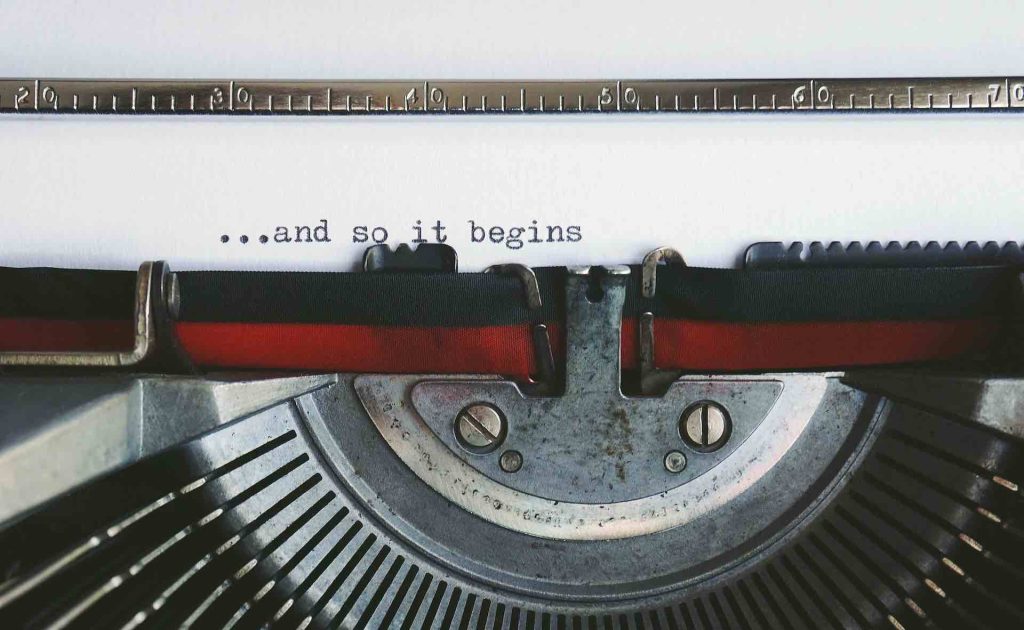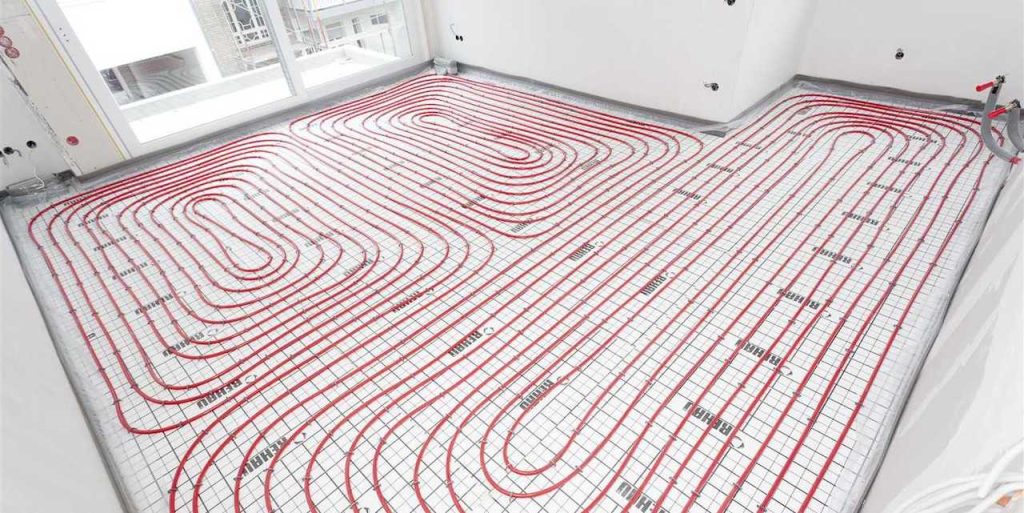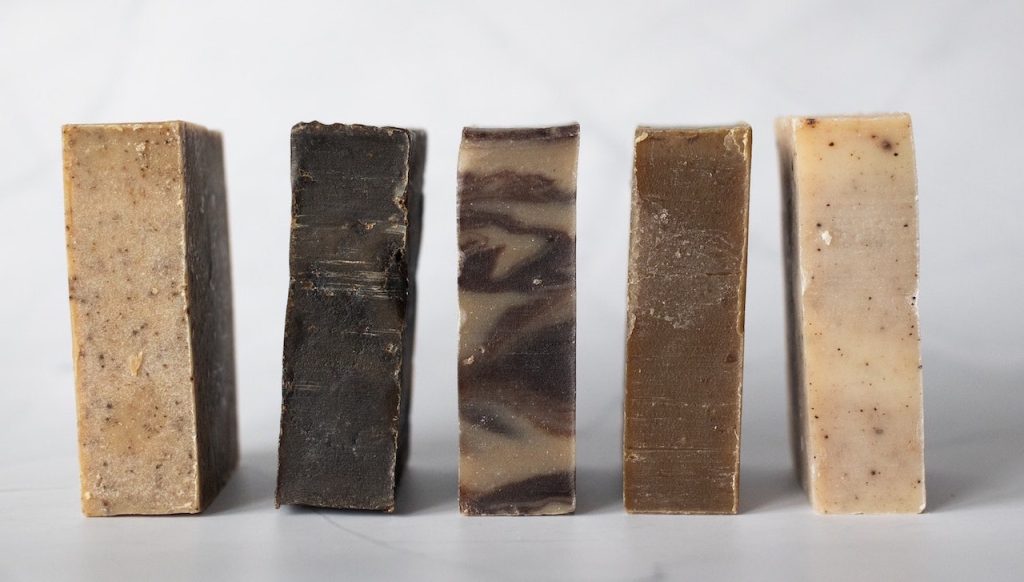I hate the twist-on F-type connector that you often find on RG-6 coaxial cables.
Some 20 years ago I had installed on a terrace wall a flat antenna with a single LNB which could be used with Astra and Hotbird. The installer pulled a simple RG-6 coaxial cable to connect it to my satellite receiver.
Nothing special, but they used twist-on F-type connectors. The location on the terrace was partially covered, so no problem with rain, etc. But I’ve spent the last 20 years having to occasionally figure out why there was not signal. And it always was a problem with those twist-on F-Type connectors. It’s so easy for them to become disconnected. The solution was always simple. Occasionally strip the cable and refit the connector, occasionally ‘fiddle’ with it and hope, and of course the problem could be at the antenna on the terrace or at the indoor receiver.
Generally a few minutes would be wasted before it worked again, but over the years I came to hate those twist-on F-type connectors. Also I would visit my local DIY store, but until recently all they could offer me was little plastic packets of twist-on F-type connectors. Until recently!
What is this RG coax anyway?
Firstly, a coax is the short name for a coaxial cable, i.e. a cable which has a conductor (or conductors) in the centre, surrounded by dielectric, then a braided shield, and all wrapped in an outer sheath. It does not mean it’s just used as an ‘antenna cable’.
RG is a US military designation from the 1930s for “Radio Guide“, and the RG numbers are completely arbitrary and were just page numbers in a book. Most cables don’t conform to that old specification, and should be termed ‘type’ RG-#. The RG-6 is generally seen as an economic ‘type’, with a copper-coated steel conductor, a thin aluminium braid, and a white plastic sheath.
What is an F-connector?
The typical F-connector for RF coax was designed to be inexpensive and quick to install in the field. It was intended to make the installer’s life easy, rather than be durable and reliable. It’s used everywhere, for satellite, antenna, and cellular booster signals, and occasionally also for FM radio, baseband video, and old ‘dashboard‘ or ‘aftermarket’ car radios.
The F-connector probably dates back to the early 1950s, in the early days of cable TV. It had to be inexpensive enough to be used throughout a house, easy to connect and disconnect, but stayed connected. And importantly it had to work well with the frequencies they were expecting to use.
As an aside, I never saw the F-connector used in a laboratory, but you did find coax cables fitted with twist-to-lock BNC connectors.
Most F-connectors just pass the centre conductor of the coax through the connector body, resulting in a less-than-dependable, corrosion-prone contact, often the cause of loss and intermittency. Conventional F-connectors are often only weakly attached to the coax braid. The cable shield is not perfectly ‘tight’ and the contact is prone to vary in quality as the cable is handled (the contact can be weakened by the mere act of screwing the connector into the F-type jack).
My solution
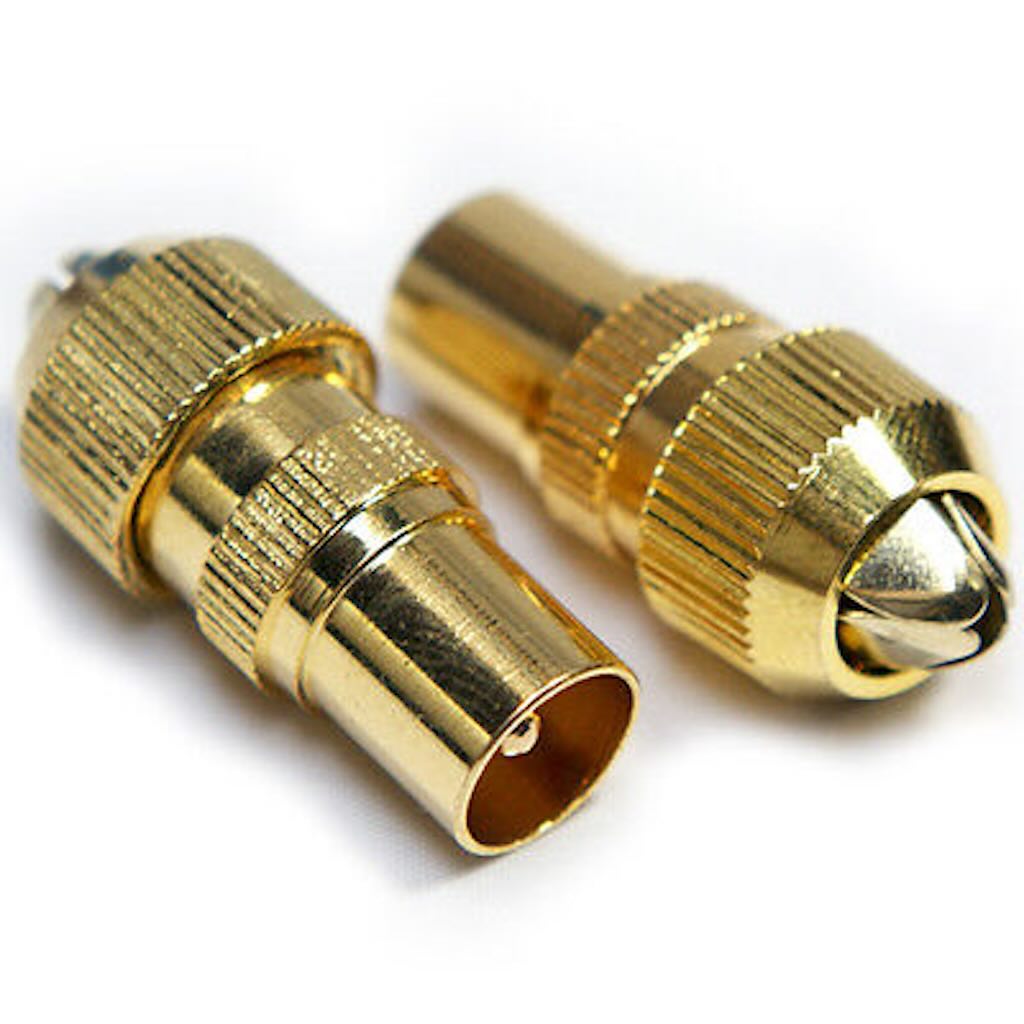
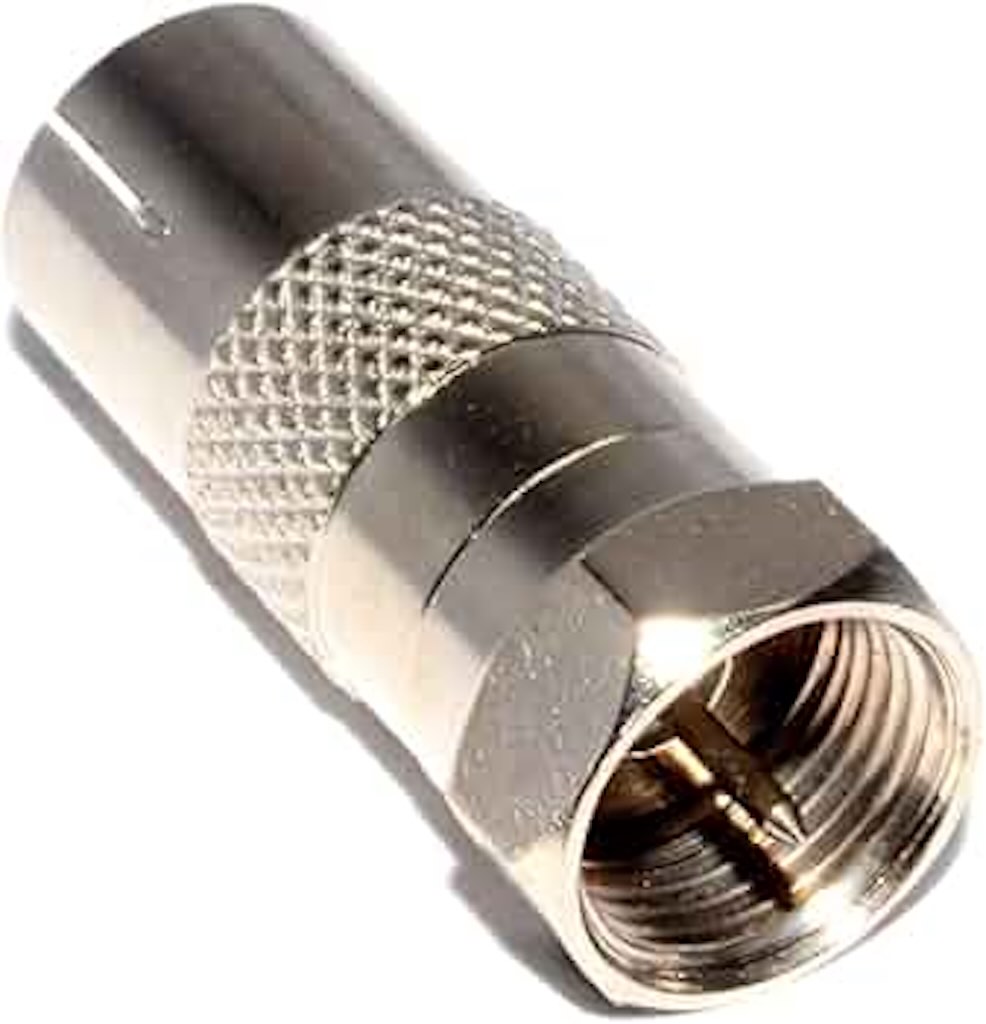
Finally, in my local DIY superstore I found the two bits I needed, namely:-
- Lexman 9.25 male TV connector (left)
- Lexman adaptor ‘F’ type male/9.25 mm female (right).
What does LNB mean?
LNB stands for Low-Noise Block Downconverter. It is a device used in satellite communication, and is typically mounted on the satellite dish. The LNB receives high-frequency satellite signals (e.g. Ku-band or C-band), amplifies them, and then converts them to a lower frequency band (usually L-band) so they can be transmitted via coaxial cable to a satellite receiver.
Why is the conductor diameter 9.52mm?
Firstly it’s not 9.52mm diameter, but ⅜” in the imperial measurement system (and the equivalent 9.525mm was rounded to 9.52mm). The choice of ⅜” as an industry standard came down to simple manufacturing standardisation.
It starts with the adoption of the 75-ohm impedance for signal transmission for most satellite, cable TV and broadband Internet applications (although fibre is replacing it). The exact diameter is a historical compromise that was designed to maintain this impedance, keep signal loss low, and as a compromise between cable flexibility (thinner with higher signal loss) and stiffness (thicker with lower signal loss).
Why was a 75-ohm impedance selected?
The choice of 75-ohm impedance for coaxial cables used in TV, satellite, and RF communication is based on a balance between signal transmission efficiency, power handling, and low signal loss.
Historical research (1930s-1950s) on coaxial cable performance showed that around 77-ohm was ideal for minimum attenuation in coaxial cables for high-frequency signals. So 75-ohm was adopted for low signal loss, and for long-distance transmission in TV, satellite, and broadband. Remembering that for things like TV signals, the objective is to transfer signals efficiently rather than handle high power, and 75-ohm offers a good voltage-to-current ratio, making it ideal for signals traveling over long distances with minimal degradation.
50-ohm is the standard for high-power RF transmission (radio transmitters, Wi-Fi, military, telecom, etc.) because it provides a balance between power handling and signal loss. The choice depends on prioritising power handling (50-ohm) or low signal loss (75-ohm).
Why does the F-connectors have a 7/16"-28 UNEF screw connection?
Firstly, we need to understand what 7/16″-28 UNEF means.
- 7/16″ is the major (outer) diameter of the screw thread, meaning the maximum diameter of the external threads is 7/16 inches (~11.11mm).
- 28 refers to the thread pitch, meaning there are 28 threads per inch (TPI).
- UNEF (Unified Extra Fine Thread) means that the thread follows the Unified Thread Standard (UTS) and has an extra fine pitch, which means the threads are more closely spaced compared to standard or fine threads. Unified Thread Standard (UTS) was established by the Unified Thread Series (UNS).
Unified Thread Standard (UTS) was developed as a collaboration between the United States, Canada, and the United Kingdom during the late 1940s. ISO (International Organization for Standardisation) has its primary focus on metric threads, but it recognises UTS for legacy and global applications.
This is a standard thread and can be used in many different applications, including in fuel systems and hydraulic connections.
An extra fine thread has several advantages. Firstly, more threads allow for better load distribution, which means higher strength for thin-walled parts. Secondly, more threads means better sealing, in particular for applications requiring airtight or liquid-tight seals. Thirdly, more threads means a more precise adjustment, or more control over tightening and loosening.
So why was the 7/16″-28 UNEF thread chosen for satellite receiver connectors?
Firstly, an extra fine thread provides better mechanical grip and reduces the risk of loosening due to vibration.
Secondly, it ensures consistent impedance matching, which is critical for maintaining signal integrity. Satellite signals operate at high frequencies (GHz range), requiring connectors that minimise signal loss and impedance mismatch.
Thirdly, early RF communication systems, including military and aerospace, used SMA connectors with the 7/16″-28 UNEF standard. As satellite TV and broadband developed, the same proven technology was adapted for consumer applications.
Why do we call connectors 'male' and 'female', and why are connectors called 'jacks'?
The obvious answer is that “male” and “female” are used for connectors because they describe the way the connectors physically interact, similar to biological male and female reproductive systems. These names are widely used across electrical, mechanical, and plumbing industries because they are simple, clear, consistent and universally recognised.
As far as I know the term “jack” comes from telephone switchboards in the late 19th century. Operators inserted plugs into “jack” sockets to manually route telephone calls. The plug (male) was inserted into the jack (female receptacle) to complete a circuit. And the name “jack” likely came from “jack-in-the-box”, as it referred to a spring-loaded, pop-in/pop-out mechanism.
Why do male threads screw clock-wise?
The answer is perhaps a bit obvious since the vast majority of people are right-handed. And the justification is that it’s just easier and more natural for them to apply force in a clockwise (right-hand) motion. I find this argument a bit odd, because I’m left-handed, and I best apply force in a clockwise direction.
The reason why most humans are right-handed is a mix of evolution, brain asymmetry, and social influences. Scientists tells us that the left hemisphere of the brain controls the right side of the body, including the right hand. And the left hemisphere is also dominant for language and fine motor skills in most people. The result was that this neurological wiring likely led to the majority of humans being right-handed.
Early humans used the right-hand tools and weapons for hunting and defence. And slowly a consistent hand preference likely helped with coordination and efficiency. And this resulted in writing systems designed for right-handed people, religious and social traditions considering the right hand as “clean” and the left as “unclean”, and even schools and workplaces encouraging (and sometimes forcing) right-hand use.
However there is no single “right-handed gene”, but studies do suggest genetics plays a role, as does the environment.
I’m left-handed. About 10% of people are left-handed, and it’s argued that this may be an advantage in sports, combat, and creativity. This is just another way to recognise that left-handed people are extra-special.
